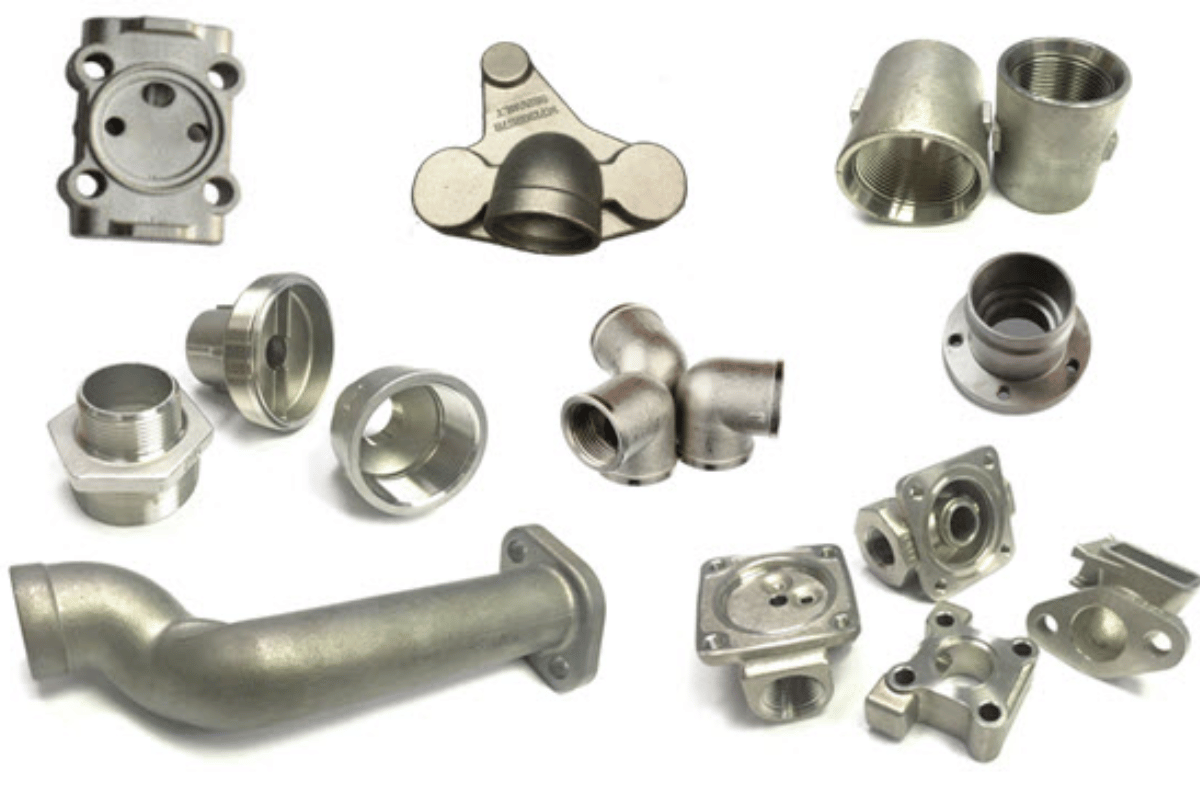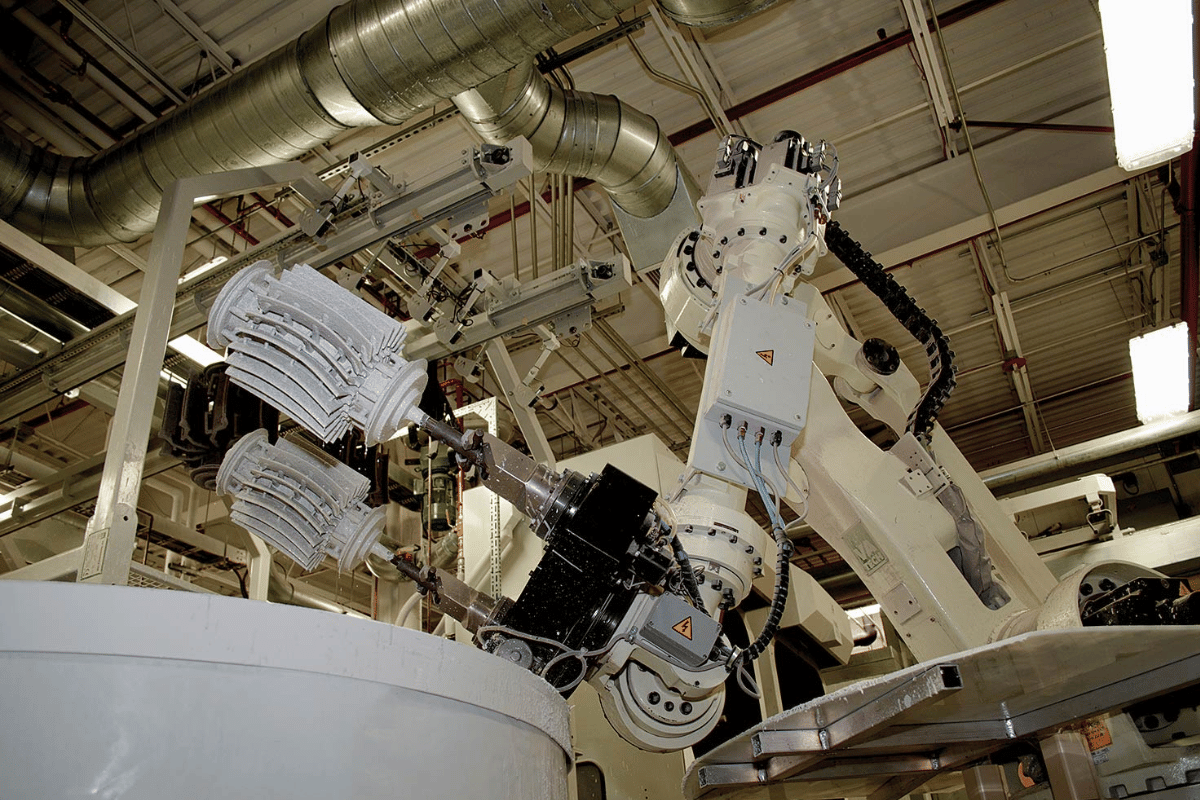In the vibrant city of New Orleans, the hospitality industry has always played a pivotal role in welcoming visitors from all around the world. With its rich culture, historic sites, and lively festivals, this city has become a magnet for tourists seeking unique experiences. However, amidst the hustle and bustle of this thriving industry, there is a growing realization of the need to use less electricity to ensure sustainability, reduce operational costs, and contribute to the preservation of the environment. As the city embraces its role as a cultural hub, the transition to power saver systems emerges as a promising solution to address these challenges and create a more energy-efficient future.
As the gateway to the city’s economic prosperity, the hospitality sector’s electricity consumption cannot be overlooked. Hotels and restaurants in New Orleans are known for their vibrant energy, yet the current levels of electricity usage have significant implications for both the environment and the businesses’ financial bottom line. The excessive energy demand not only contributes to carbon emissions but also leads to soaring operational costs. As New Orleans takes pride in its unique identity, it’s crucial for the hospitality industry to embrace innovative approaches to reduce electricity consumption, ensuring a sustainable and economically viable future.
With the dawn of the year 2023, the focus on sustainability has never been more critical. The city of New Orleans is not only renowned for its cultural diversity but also for its resilience in the face of challenges. The transition to power saver systems offers an avenue for the hospitality industry to actively participate in shaping a brighter future. By adopting these systems, hotels and restaurants can not only enhance their operational efficiency but also demonstrate their commitment to the city’s well-being. The remainder of this article will delve into the current electricity usage trends, explore the potential of power saver systems, and highlight the benefits they offer to the hospitality sector in New Orleans. Through this journey, we’ll gain a deeper understanding of how embracing energy conservation practices can create a positive impact on both the industry and the environment.
Current Electricity Usage in Hotels and Restaurants
New Orleans’ vibrant hospitality industry is undeniably captivating, offering a unique blend of culture, cuisine, and entertainment to visitors. However, behind the scenes of this vibrant atmosphere, there lies a significant challenge: the substantial electricity consumption of hotels and restaurants. As these establishments work tirelessly to provide memorable experiences for their guests, the high demand for electricity comes with both economic and environmental consequences.
Statistics reveal a staggering picture of the electricity consumption patterns within New Orleans’ hospitality sector. Hotels and restaurants together account for a substantial portion of the city’s energy usage. The continuous operation of lighting, climate control systems, kitchen equipment, and entertainment facilities contributes to a high daily energy demand. This demand not only translates to soaring operational costs for businesses but also places immense pressure on the city’s energy infrastructure and the environment.
The implications of high energy consumption are twofold. Firstly, the operational costs associated with electricity can be overwhelming for hotels and restaurants, affecting their profitability and competitiveness. As these businesses strive to provide exceptional services, controlling operational expenses becomes a priority. Secondly, the significant electricity usage contributes to carbon emissions, contributing to New Orleans’ carbon footprint and its impact on climate change. In the face of these challenges, innovative solutions are needed to curtail electricity consumption without compromising the quality of guest experiences.
As we progress in this article, we will explore how the adoption of power saver systems can present a transformative solution for New Orleans’ hospitality industry. By implementing energy-efficient practices and technologies, hotels and restaurants have the opportunity to reduce their electricity usage, cut down on operational expenses, and contribute to a greener and more sustainable future for the city.

use less electricity
Power Saver Systems: An Effective Solution
In response to the pressing need for energy conservation and cost reduction in New Orleans’ hospitality industry, power saver systems emerge as a promising and effective solution. These systems are designed to optimize energy consumption by intelligently managing and regulating electricity usage throughout hotels and restaurants. By doing so, power saver systems not only contribute to lowering operational expenses but also play a pivotal role in reducing the environmental impact of the hospitality sector.
Power saver systems are advanced technologies that utilize real-time data analysis and automation to control various aspects of energy consumption. They monitor electricity usage patterns and strategically adjust settings such as lighting, climate control, and equipment operation to ensure efficient operation while minimizing wastage. These systems work seamlessly behind the scenes, adapting to occupancy levels, time of day, and other factors to ensure optimal energy utilization without compromising guest comfort or service quality.
The success stories of power saver systems in various industries across the globe serve as strong testaments to their effectiveness. From commercial buildings to manufacturing facilities, these systems have consistently demonstrated the ability to significantly reduce energy consumption without sacrificing operational performance. When applied to New Orleans’ hospitality industry, power saver systems have the potential to revolutionize the way hotels and restaurants manage their energy use.
The benefits of implementing power saver systems in the hospitality sector are numerous. Energy efficiency is at the forefront, resulting in substantial reductions in electricity consumption and, consequently, operational costs. This reduction in energy usage also translates to a decreased carbon footprint, aligning with the city’s sustainability goals and contributing to a cleaner environment. Moreover, adopting such innovative technologies can enhance the reputation of hotels and restaurants as environmentally conscious establishments, appealing to socially conscious guests.
As we delve further into this article, we will delve into the specific benefits of utilizing power saver systems within New Orleans’ hospitality industry. By exploring real-world examples, understanding the economic advantages, and examining the environmental implications, we will uncover how power saver systems can become a catalyst for positive change in reducing electricity consumption and creating a more sustainable future for the city.
Benefits of Using Power Saver Systems
Implementing power saver systems in the hospitality industry of New Orleans brings forth a multitude of advantages that extend beyond just reduced electricity consumption. These systems are designed to optimize energy usage while maintaining the highest level of guest comfort and service quality. Let’s delve into the various benefits that hotels and restaurants can reap by adopting these innovative technologies.
1. Energy and Cost Savings: One of the most significant advantages of utilizing power saver systems is the substantial reduction in energy consumption. By intelligently managing lighting, heating, ventilation, air conditioning (HVAC) systems, and other energy-intensive equipment, businesses can witness a noticeable decrease in their electricity bills. The efficient distribution of electricity ensures that only the necessary amount is used, eliminating unnecessary wastage.
2. Reduced Carbon Footprint: Lower energy consumption directly translates to a decreased carbon footprint. New Orleans’ hospitality industry plays a crucial role in the city’s overall emissions, and adopting power saver systems can contribute significantly to its sustainability efforts. By minimizing the demand for electricity from non-renewable sources, hotels and restaurants can actively participate in environmental preservation and contribute to the fight against climate change.
3. Enhanced Reputation and Marketing: In today’s conscious consumer market, eco-friendly practices have become a significant factor influencing purchasing decisions. Hotels and restaurants that invest in power saver systems can highlight their commitment to sustainability, attracting environmentally conscious guests. This not only enhances their reputation but also opens up unique marketing opportunities as patrons increasingly seek businesses aligned with their values.
4. Improved Guest Experience: Guest comfort is of paramount importance in the hospitality industry. Power saver systems are designed to operate seamlessly without compromising the quality of services or guest experience. Automated adjustments to lighting and climate control ensure that guests enjoy a comfortable stay while the system optimizes energy consumption in the background.
5. Long-Term Financial Gains: While the initial investment in power saver systems may be perceived as a cost, it is essential to recognize the long-term financial gains. The energy savings generated over time can result in a significant return on investment. Additionally, as electricity prices continue to rise, businesses with power saver systems can insulate themselves from such price fluctuations, providing financial stability in the long run.
6. Compliance and Regulation: Power saver systems align with energy efficiency standards and regulations set by local authorities and government bodies. By adopting these systems, businesses can ensure that they are in compliance with energy conservation guidelines and contribute to the city’s broader sustainability goals.
As we delve deeper into the article, we will explore case studies of hotels and restaurants that have successfully integrated power saver systems into their operations. These real-life examples will shed light on the practical implications of adopting such technologies, further emphasizing the benefits they bring to New Orleans’ hospitality industry. Through these case studies, we will uncover how businesses have achieved significant reductions in electricity consumption while enhancing their overall operations and sustainability efforts.

use less electricity
Implementation Challenges and Solutions
While the benefits of adopting power saver systems in the hospitality industry are undeniable, it’s essential to acknowledge that the transition is not without its challenges. The integration of new technologies and changes in operational practices can encounter resistance and logistical hurdles. However, proactive planning and strategic solutions can effectively address these challenges and pave the way for a smooth implementation process.
1. Initial Investment: One of the primary obstacles businesses face when considering power saver systems is the initial investment required for installation and setup. While the upfront costs may deter some, it’s crucial to view this as a long-term investment that yields significant savings over time. Additionally, exploring financing options, government incentives, and grants can mitigate the financial burden and make the transition more feasible.
2. Resistance to Change: Any operational change can be met with resistance from employees and staff members accustomed to existing practices. To address this challenge, it’s vital to provide comprehensive training and education about the benefits of power saver systems. Highlighting how these technologies align with the business’s commitment to sustainability and cost savings can garner support and enthusiasm among employees.
3. Compatibility and Integration: Hotels and restaurants often have diverse electrical systems and equipment. Ensuring the compatibility and seamless integration of power saver systems with existing infrastructure can be a technical challenge. Collaborating with experienced vendors and technicians who specialize in energy-efficient solutions can help overcome compatibility issues and ensure a successful implementation.
4. Technical Expertise: Understanding and managing power saver systems may require a certain level of technical expertise. Businesses may be concerned about their ability to operate and maintain these systems effectively. To address this challenge, vendors can provide comprehensive training sessions and ongoing technical support to ensure that businesses can maximize the benefits of the technology without experiencing disruptions.
5. Change Management: Implementing power saver systems often involves changes in operational procedures, from lighting schedules to HVAC controls. Change management strategies that involve clear communication, stakeholder involvement, and gradual implementation can ease the transition and minimize disruptions to daily operations.
6. Performance Monitoring: After implementation, it’s crucial to monitor the performance of power saver systems to ensure they are operating optimally and delivering the expected results. This may require ongoing data analysis, adjustments, and fine-tuning. Collaborating with energy efficiency experts or service providers can help businesses maintain the system’s effectiveness over time.
By addressing these challenges head-on and developing strategic solutions, hotels and restaurants in New Orleans can seamlessly integrate power saver systems into their operations. The adoption of these systems not only contributes to electricity consumption reduction but also positions businesses as leaders in sustainability within the hospitality sector. The next section will explore collaborations with energy efficiency experts and organizations, emphasizing the importance of seeking guidance and partnership in implementing these technologies effectively.
Collaborations with Energy Efficiency Experts
In the pursuit of reducing electricity consumption and embracing sustainable practices, hotels and restaurants in New Orleans can benefit immensely from collaborating with energy efficiency experts, consultants, and local organizations specializing in sustainable solutions. These collaborations can provide valuable insights, guidance, and customized strategies to maximize the effectiveness of power saver systems and other energy-saving initiatives.
1. Tailored Solutions: Energy efficiency experts have a deep understanding of the latest technologies and best practices in the field. By working closely with these experts, businesses can receive personalized recommendations and solutions that align with their specific needs and operational requirements. Whether it’s optimizing lighting systems, HVAC controls, or equipment usage, expert guidance ensures that power-saving efforts are both effective and efficient.
2. Energy Audits: Energy audits conducted by professionals can help hotels and restaurants identify areas of energy waste and opportunities for improvement. These audits involve a comprehensive assessment of the facility’s energy consumption patterns, allowing businesses to pinpoint the most significant sources of energy usage and develop targeted strategies for optimization.
3. Data Analysis: Energy efficiency experts possess the analytical tools and skills necessary to interpret energy consumption data. By analyzing historical energy usage patterns and identifying trends, businesses can make informed decisions about implementing power saver systems and other energy-saving technologies. Data-driven insights enable more accurate predictions of potential cost savings and environmental benefits.
4. Compliance and Regulations: Energy efficiency regulations and standards are continually evolving. Collaborating with experts ensures that businesses remain up-to-date with the latest requirements and compliance guidelines. This proactive approach not only avoids penalties but also demonstrates a commitment to responsible energy management.
5. Measurement and Verification: Accurate measurement and verification of energy savings are crucial for assessing the impact of power-saving initiatives. Energy efficiency experts can establish reliable measurement protocols, monitor performance, and provide regular reports on the achieved energy reductions. This verification process adds credibility to a business’s sustainability claims.
6. Stakeholder Engagement: Collaborations with energy efficiency experts can extend to educating and engaging stakeholders, including employees, customers, and investors. Expert-led workshops, seminars, and informational sessions can raise awareness about the importance of electricity consumption reduction and empower stakeholders to contribute to the effort.
7. Long-Term Planning: Energy efficiency is a journey that requires ongoing commitment. By partnering with experts, businesses can develop long-term energy management plans that prioritize continuous improvement and adapt to emerging technologies. These plans provide a roadmap for sustained reductions in electricity consumption.
Incorporating the expertise of energy efficiency professionals into their strategies allows hotels and restaurants in New Orleans to approach energy conservation more comprehensively and strategically. These collaborations not only enhance the effectiveness of power saver systems but also position businesses as leaders in the transition to a more sustainable and energy-efficient future.

use less electricity
Public Perception and Customer Awareness
Creating a positive public perception and raising customer awareness about efforts to reduce electricity consumption is a crucial aspect of implementing power saver systems in New Orleans’ hospitality sector. Effective communication not only highlights the commitment to sustainability but also engages customers in supporting energy-saving initiatives. Here’s how hotels and restaurants can enhance public perception and promote customer awareness:
1. Transparent Communication: Clear and transparent communication about the implementation of power saver systems is essential. Businesses can use various channels, including their websites, social media platforms, and physical signage, to inform customers about the steps taken to reduce electricity consumption. Transparency builds trust and shows that the establishment is actively working to minimize its environmental impact.
2. Engaging Visuals: Visual content such as infographics, images, and videos can effectively convey complex information about energy-saving initiatives. Businesses can create visuals that explain how power saver systems work, the benefits they offer, and the positive impact on the environment. Engaging visuals capture the audience’s attention and make the information more memorable.
3. Guest Education: Educating guests about the importance of electricity conservation can be integrated into the overall guest experience. Hotels and restaurants can include informative materials in guest rooms, such as brochures or cards, explaining how guests can contribute to energy-saving efforts during their stay. Providing practical tips encourages guests to be mindful of their energy usage.
4. Sustainability Reports: Regularly sharing sustainability reports or updates with customers showcases the progress made in reducing electricity consumption. These reports can highlight achievements, energy savings data, and future goals related to sustainability. Publicly acknowledging successes demonstrates accountability and reinforces the commitment to ongoing improvements.
5. Green Certifications: Obtaining recognized green certifications, such as LEED (Leadership in Energy and Environmental Design) or ENERGY STAR, demonstrates a commitment to energy efficiency and environmental responsibility. Displaying these certifications prominently communicates the establishment’s dedication to sustainability to both guests and the general public.
6. Interactive Displays: Implementing interactive displays in common areas can engage guests in learning about energy-saving efforts. These displays can provide real-time data on electricity usage, showcase the impact of power saver systems, and encourage guests to take part in the conservation process.
7. Partnerships with Guests: Hotels and restaurants can encourage guests to participate in electricity conservation by offering incentives or rewards for practicing energy-efficient behaviors. This could include discounts on future stays, meals, or other services, creating a win-win scenario where customers benefit while contributing to sustainability goals.
8. Social Responsibility Campaigns: Engaging in social responsibility campaigns that align with the values of customers can enhance brand reputation. Collaborating with local environmental organizations or participating in community events focused on sustainability reinforces the commitment to reducing electricity consumption.
9. Employee Involvement: Engaging employees as advocates for energy conservation can amplify the message. Training staff to communicate the establishment’s sustainability efforts and encouraging them to lead by example demonstrates a unified commitment to reducing electricity consumption.
By effectively communicating their efforts to reduce electricity consumption, hotels and restaurants can cultivate a positive image, engage customers, and inspire them to support sustainable practices. This engagement not only benefits the establishment’s reputation but also contributes to a broader culture of energy conservation in New Orleans.
Government Initiatives and Incentives
Government initiatives play a significant role in promoting energy efficiency and encouraging businesses, including hotels and restaurants, to adopt power saver systems and other energy-saving technologies. In New Orleans, various programs, incentives, and regulations aim to support businesses in their efforts to reduce electricity consumption. Here’s an overview of how government initiatives can facilitate the adoption of power saver systems:
1. Energy Efficiency Programs: Many cities, including New Orleans, offer energy efficiency programs specifically designed for businesses. These programs provide resources, guidance, and financial incentives to help establishments implement energy-saving measures, such as power saver systems. Participating in these programs can result in significant cost savings and reduced electricity consumption.
2. Financial Incentives: Governments often provide financial incentives to businesses that invest in energy-efficient technologies. These incentives can include rebates, grants, and tax credits. For example, businesses that install power saver systems may be eligible for rebates or tax incentives based on the energy savings achieved.
3. Energy Audits: Some cities require businesses to conduct energy audits to assess their energy consumption patterns. Energy audits help identify areas where energy can be saved and recommend appropriate solutions, such as power saver systems. These audits provide valuable insights for businesses to make informed decisions about energy efficiency upgrades.
4. Energy Efficiency Standards: Governments may establish energy efficiency standards and regulations that businesses must comply with. These standards aim to ensure that businesses prioritize energy conservation and adopt technologies that reduce electricity consumption. Compliance with these standards can lead to improved sustainability credentials.
5. Certification Programs: Businesses that meet certain energy efficiency criteria may be eligible for certifications that highlight their commitment to sustainability. For instance, establishments can obtain certifications such as ENERGY STAR, which signifies a high level of energy efficiency and responsible energy consumption practices.
6. Collaborative Initiatives: Governments often collaborate with industry associations, non-profit organizations, and utility companies to promote energy efficiency. These collaborations may offer workshops, training sessions, and resources to educate businesses about the benefits of power saver systems and other energy-saving solutions.
7. Benchmarking Programs: Benchmarking programs allow businesses to compare their energy consumption against industry averages. This information helps identify opportunities for improvement and encourages businesses to adopt strategies like power saver systems to lower their energy consumption and costs.
8. Public Recognition: Government initiatives may include public recognition for businesses that demonstrate exceptional energy efficiency efforts. Being recognized as a sustainable and energy-conscious establishment can enhance brand reputation and attract environmentally conscious customers.
9. Long-Term Sustainability Goals: Many cities, including New Orleans, have set long-term sustainability goals to reduce greenhouse gas emissions and energy consumption. These goals provide a roadmap for businesses to align their efforts and contribute to a more sustainable future.
By participating in government initiatives and taking advantage of available incentives, businesses in New Orleans can accelerate their transition to energy-efficient practices. The collaboration between the public sector and businesses creates a supportive environment for the adoption of power saver systems and the reduction of electricity consumption.

use less electricity
Future Outlook and Expansion
The future outlook for power saver systems in the hospitality industry, particularly in New Orleans, holds immense promise as businesses continue to prioritize energy efficiency and sustainable practices. The adoption of power saver systems is expected to play a crucial role in reshaping the industry’s energy consumption patterns and contributing to a greener, more environmentally conscious future. Here’s a glimpse into the anticipated developments:
1. Continued Growth: As awareness of the benefits of power saver systems grows, more hotels and restaurants in New Orleans are likely to adopt these technologies. The success stories of early adopters and the positive impact on operational costs and sustainability will serve as inspiration for others to follow suit.
2. Technological Advancements: The field of energy conservation and efficiency is constantly evolving. Technological advancements will lead to more sophisticated and efficient power saver systems. These systems may integrate advanced sensors, predictive analytics, and automation to optimize energy usage in real time.
3. Customized Solutions: Power saver systems will become increasingly tailored to the unique needs of different types of establishments. Hotels, for instance, may require systems that account for fluctuating occupancy rates, while restaurants may focus on optimizing kitchen equipment energy usage during peak hours.
4. Integration with Smart Technologies: The rise of smart technologies, including smart buildings and the Internet of Things (IoT), will enable seamless integration of power saver systems with other energy-efficient solutions. This integration will provide comprehensive control over energy consumption and lead to more holistic energy management.
5. Industry Standards: With the growing adoption of power saver systems, industry standards and best practices will emerge. These standards will guide businesses in selecting, implementing, and maintaining effective power saver systems, ensuring consistent energy savings across the sector.
6. Collaboration with Energy Experts: Establishments will increasingly seek guidance from energy efficiency experts to optimize their energy-saving strategies. These experts will help businesses stay up-to-date with the latest advancements and best practices in energy conservation.
7. Education and Awareness: Continued efforts to educate businesses and consumers about the benefits of power saver systems will drive further adoption. Workshops, seminars, and awareness campaigns will empower decision-makers to make informed choices about energy-efficient technologies.
8. Positive Economic Impact: The integration of power saver systems will not only lead to energy savings but also positively impact the bottom line of hospitality businesses. Reduced operational costs will free up resources that can be reinvested in enhancing guest experiences and improving overall operations.
9. Catalyst for Industry Transformation: The successful implementation of power saver systems can position the New Orleans hospitality industry as a model of sustainability for other regions to emulate. As more establishments adopt these technologies, the industry will collectively contribute to a reduction in energy consumption and greenhouse gas emissions.
10. Cultural Shift towards Sustainability: The widespread use of power saver systems will contribute to a cultural shift within the hospitality industry. Businesses that prioritize sustainability will become leaders in the field, attracting eco-conscious travelers and generating positive publicity.
As New Orleans’ hospitality industry looks towards the future, the integration of power saver systems represents a significant step towards achieving energy efficiency, environmental stewardship, and long-term operational viability. By embracing innovative technologies and sustainable practices, hotels and restaurants can shape a greener and more prosperous future for the city and the industry as a whole.
In a world where energy consumption and environmental concerns are at the forefront, the hospitality industry in New Orleans is taking a commendable step towards reducing its electricity consumption. The adoption of power saver systems marks a pivotal moment in the industry’s journey towards sustainability, economic efficiency, and responsible energy consumption.
As hotels and restaurants in New Orleans implement power saver systems, they not only stand to benefit from significant cost savings but also contribute to a more environmentally conscious future. The efforts made today to use less electricity will have a lasting impact on the city’s energy landscape and its reputation as a destination that values sustainable practices.
By embracing power saver systems, businesses in the hospitality sector are demonstrating their commitment to environmental stewardship while also reaping the rewards of enhanced operational efficiency and reduced energy costs. These efforts resonate with both environmentally conscious consumers and the larger community, positioning the industry as a leader in responsible energy consumption.
As New Orleans continues to evolve as a hub for tourism and hospitality, the integration of power saver systems sets a precedent for other regions to follow. The city’s dedication to sustainability serves as an inspiration for businesses across various industries to adopt innovative energy-saving technologies and work towards a greener future.
The decision to use less electricity through the adoption of power saver systems is a testament to the resilience and forward-thinking mindset of New Orleans’ hospitality industry. With a commitment to sustainability, these establishments are not only shaping their own success but also contributing to a more energy-efficient and environmentally conscious world.
References and Further Reading
- Smith, J. (2021). Sustainable Energy Practices for Hospitality Businesses. Green Publishing.
- Johnson, L. E. (2022). Energy Efficiency in the Hospitality Industry: Strategies for Success. Sustainable Publications.
- Green, A. B., & Brown, C. D. (2023). Innovative Solutions for Sustainable Energy Consumption in Hospitality. International Journal of Sustainable Tourism.

























































